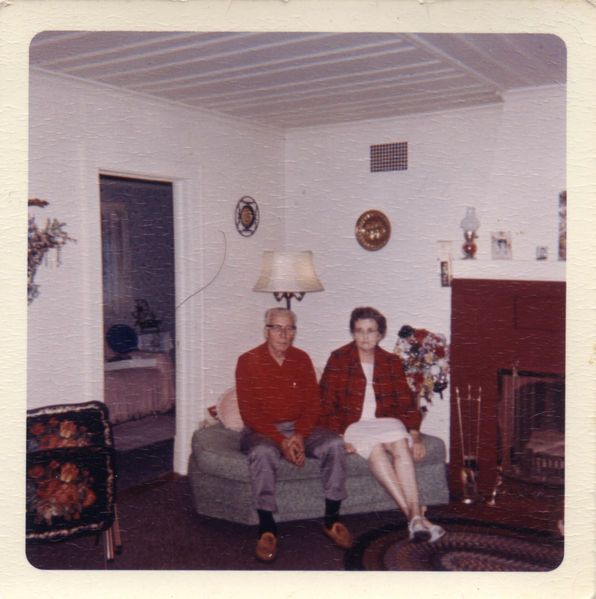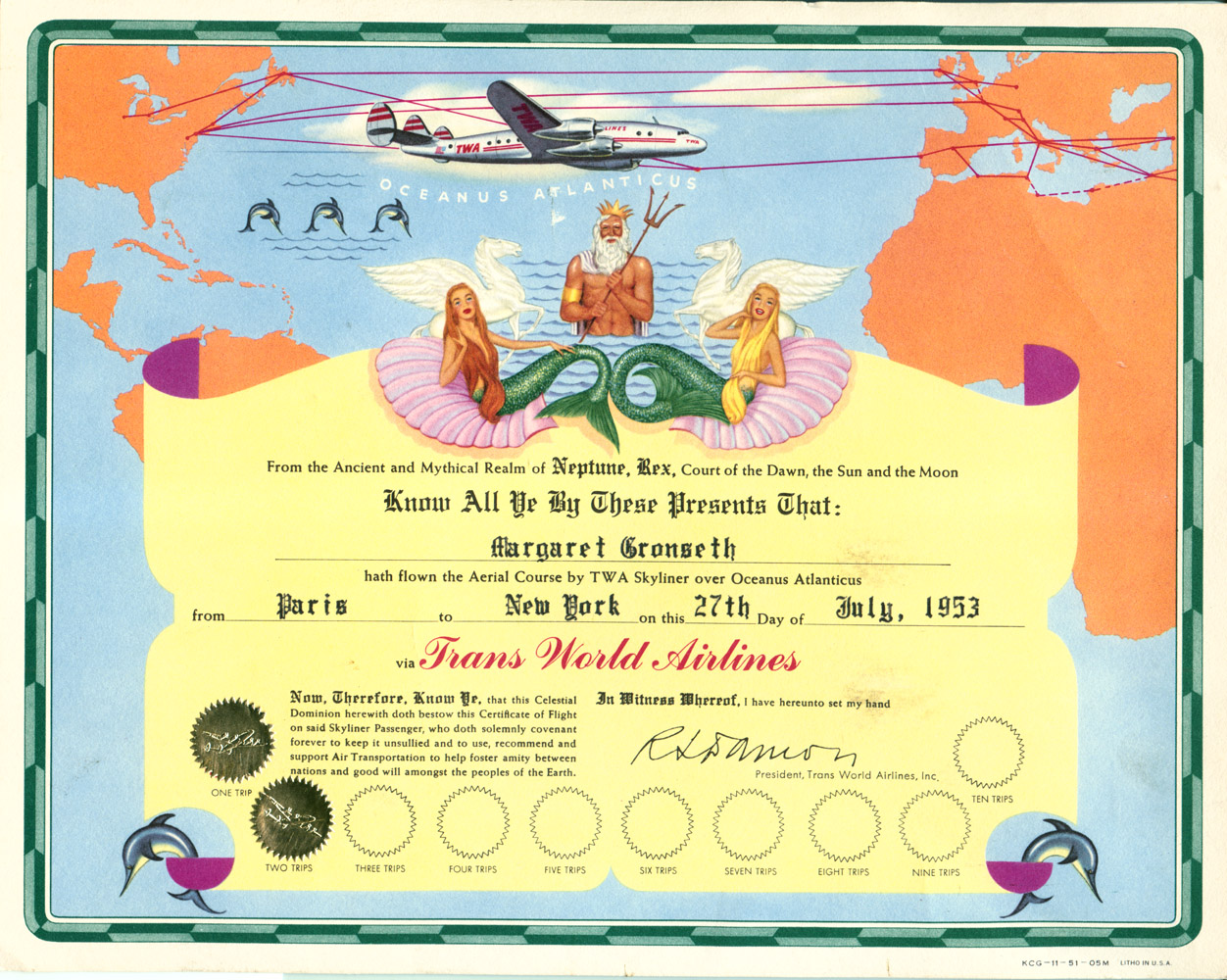
Malferd and his wife. Dated by lab, Dec 1953.

Malferd and his wife. Dated by lab, Dec 1953.
San Francisco still has Gray Line offering bus tours of their beautiful city, all these years later. The map above is from 1953, from a pamphlet called “Really See San Francisco.” I’m just including the map here, but the rest may follow someday. Nearly 60 years ago, here’s what the attractions via a bus tour were:
All you had to do was dial Yukon 6-4000, and you could hit the road in style! I’m impressed that Del Monte was such a large part of the various tours — post WWII, it had mostly been taken over by the Navy School, although all the land around the hotel was full of gardens, woods, and golf courses, still accessible to tourists at the time. “Chinatown after dark” is an interesting name: while the tour, given the clientèle of city bus tourists, was probably quiet and unoffensive for the time, I wonder if it was tied-in to the movie of the same name from 1931.
As for the map itself: I’m a fan of purposeful maps, ones that don’t spare the information about what it feels relevant, but ignores the irrelevant whenever possible. This isometric view includes landmarks and gives a nice sensation of distance, which then also lets riders know how much time will be spent looking out the window at non-landmarks.
 In July 1953, Margaret flew across the Atlantic ocean, from Paris to New York. This was during some of TWAs heydays — Hughes was in control and hadn’t gone completely nuts yet, of travelling abroad was still a luxury but was beginning to reach the common people during the postwar boom, and the process was more comfortable and safer than ever before. The bottom text is the most important to note, though: by being awarded this certificate, the bearer was bound to recognize that they were to promote air travel, and recognize its value to international relations. In the fifties, air travel wasn’t just bus service between big cities — it was diplomacy serviced by stewardesses.
In July 1953, Margaret flew across the Atlantic ocean, from Paris to New York. This was during some of TWAs heydays — Hughes was in control and hadn’t gone completely nuts yet, of travelling abroad was still a luxury but was beginning to reach the common people during the postwar boom, and the process was more comfortable and safer than ever before. The bottom text is the most important to note, though: by being awarded this certificate, the bearer was bound to recognize that they were to promote air travel, and recognize its value to international relations. In the fifties, air travel wasn’t just bus service between big cities — it was diplomacy serviced by stewardesses.
see also: TWA history * Lockheed Constellation survivors * Fly TWA museum